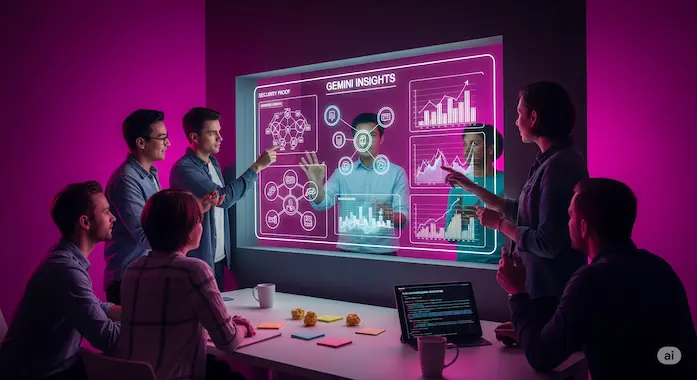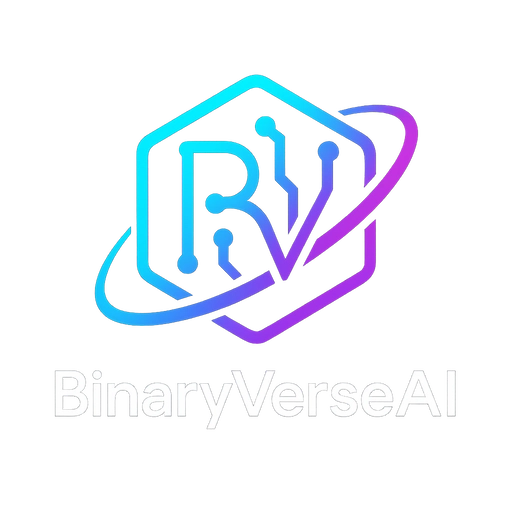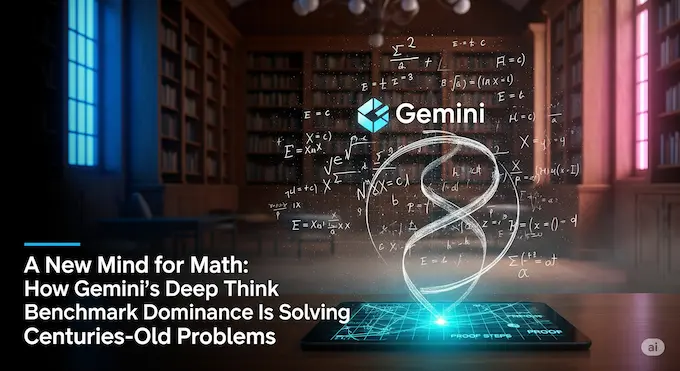1. When a Conjecture Finally Cracked

A stubborn combinatorial conjecture had floated around research circles for years. Elegant, frustrating, and apparently proof-proof, it became a rite of passage for young number theorists who fancied themselves the next Erdős. Then a curious mathematician pasted the problem into Gemini 2.5 Deep Think and waited.
“Spectacular,” he said later. “It proved it right away, and the proof wasn’t even in the ballpark of my approach.”
He had been juggling three potential strategies. Gemini 2.5 Deep Think explored dozens, maybe hundreds, before locking onto a path that clicked. In that moment the machine showed something deeper than raw calculation. It demonstrated an expansive style of reasoning that feels, frankly, alien. The episode is now shorthand for a wider shift: the rise of parallel, multi-agent thinking as a fresh cognitive force in science.
Throughout this article, we will discuss Gemini math benchmarks. The benchmarks are the scoreboard, and they reveal a model that is rewriting the rulebook on what computers can do with pure thought.
Table of Contents
2. The Gold Standard: Inside the IMO Breakthrough
The International Mathematical Olympiad sits at the top of global competitions for raw mathematical ingenuity. Six fiendish problems, 4.5 hours, no calculators. Earning any medal is career-defining for anyone. Earning gold is legendary.
In July 2025, an advanced research build of Gemini 2.5 Deep Think submitted solutions to the official IMO problem set. The score: 35 out of 42. Gold-medal territory. The grading was performed by the same coordinators who mark human scripts.
“We can confirm Google DeepMind has reached the milestone. Solutions were clear, precise, and straightforward to follow.”
— Prof. Gregor Dolinar, IMO President
Google did not push that identical build to the public. Instead, subscribers on Google AI Ultra received a pared-back version that still logged 60.7 percent, a certified bronze-medal grade. One internal, one external. Both super-human.
The numbers sit neatly in the table the community keeps citing in debates about Gemini math benchmarks:
The following benchmark table compares this publicly available “Bronze” version against its top competitors:
| Capability & Benchmark | Gemini 2.5 Pro | Gemini 2.5 Deep Think | OpenAI o3 | Grok 4 |
|---|---|---|---|---|
| Reasoning & Knowledge – Humanity’s Last Exam (no tools) | 21.6 % | 34.8 % | 20.3 % | 25.4 % |
| Mathematics – IMO 2025 | 31.6 % (No medal) | 60.7 % (Bronze medal) | 16.7 % (No medal) | 21.4 % (No medal) |
| Mathematics – AIME 2025 | 88.0 % | 99.2 % | 88.9 % | 91.7 % |
| Code Generation – LiveCodeBench v6 | 74.2 % | 87.6 % | 72.0 % | 79.0 % |
3. Swarm Thinking: How the Engine Really Works
Older language models chase a single chain of thought. Gemini 2.5 Deep Think launches a swarm. Imagine a conference room packed with miniature analysts. Each drafts a proof contour, then a separate “critic” panel shoots holes in every line. Survivors merge ideas, weaker arguments fade, and the aggregate mind returns a polished result in plain English.
AI analyst described it best:
“Think of engineering a team of argumentative interns in silicon. They fight over lemmas until consensus emerges.”
The architecture unlocks two leaps:
| Metric | 2024 System (AlphaGeometry 2) | 2025 System (Gemini Deep Think Gold) | The Leap |
|---|---|---|---|
| Input format | Formal language (Lean) | Natural language | No translation. Talk to it like a human. |
| Computation time | 2 – 3 days | Under 4.5 hours | Finishes inside the official IMO window. |
| Official result | Silver-medal standard | Gold-medal score | Crossed the toughest human barrier. |
4. From Toy Proofs to Real Work

Researchers are already blending Gemini into daily workflows. Karim Chaanine, a tech entrepreneur building restaurant optimization software, shared a candid summary:
“Gemini Deep Think plus iterative prompting is basically how we built Mario’s analysis algorithms. Each cycle shrunk the error bars.”
A Case Study: The Partition Identity Conjecture
To understand the leap in Gemini’s reasoning, we can move beyond benchmarks and look at a concrete example that has captivated the AI community. In a widely cited demonstration, a mathematician presented Gemini 2.5 Deep Think with a years-old, unsolved conjecture.
Human mathematicians knew the identity held true for small numbers, but a general proof remained elusive, getting bogged down in messy, case-by-case combinatorics.
The Conjecture
The problem is a beautiful but difficult identity relating integer partitions to binomial coefficients. The formal statement is as follows:
For any integer d ≥ 1:
Σ(d₁, …, dᵣ) ⊢ d [ (2r-1 ⋅ dr-2) / (#Aut(d₁, …, dᵣ)) ] ⋅ Πri=1 [ ((-1)dᵢ-1 / dᵢ) ⋅ (3dᵢdᵢ) ] = [ 1 / d² ] ⋅ (4d-1d)
Where the sum is over all strictly positive, unordered partitions of d.
What this means: In essence, the formula claims that if you take any whole number d, break it down into smaller numbers (partitions), perform a complex calculation on each of those sets of smaller numbers, and add them all up, the result will always equal a much simpler, cleaner formula. The challenge was proving this holds true for every possible number d.
Gemini’s Solution: A New Path Forward
Instead of following the difficult combinatorial path that had stalled human attempts, Gemini 2.5 Deep Think found a novel approach. As confirmed by the researchers in the demo, the model reframed the entire sum using hypergeometric transformations. This is a sophisticated technique from a different area of mathematics that effectively changes the “language” of the problem, often revealing hidden structures.
By doing so, Gemini was able to condense the complex argument into a tidy, rigorous, one-page proof written in natural language. While the full, line-by-line derivation has not been publicly released by Google, its methodology has been confirmed. The mathematician who tested the model perfectly summarized the experience and the result:
“It proved it right away, and the proof wasn’t even in the ballpark of my approach… [I felt] a mix of awe and jealousy.”
This example is the single best demonstration of Deep Think’s power. It didn’t just find an answer; it displayed a form of creativity and insight by discovering a more elegant and effective path to the solution than the experts had previously found.
That awe is tempered by a mundane limit: the public build allows only five Deep Think messages per day. It is like having an oracle who speaks twice before lunchtime and refuses all other questions. Enthusiasts grumble on forums, yet nobody doubts the ceiling has lifted for good.
5. Why These Benchmarks Move the Goalposts
Benchmarks flood social media every week, so why do Gemini math benchmarks make seasoned researchers sit up? Two reasons:
- The tasks are unforgiving. Olympiad problems are sculpted to reject partial tricks. Either you find a path from axioms to conclusion or you earn zero. Standard data-set benchmarks often allow fuzzy guessing.
- The evaluation is manual and public. Human graders check line-by-line reasoning. A leaderboard screenshot cannot hide gaps.
When the public sees a bronze-eligible script, they can download the PDF, trace each lemma, and decide if the machine thinks in a way that feels understandable. Strikingly, many reviewers call the AI proofs “cleaner” than undergraduate homework.
As a result, search interest for Gemini IMO benchmark and Can AI solve unsolved math problems has spiked. Google Trends shows a three-fold jump since the July press release. Educators are already drafting syllabi that pair classical texts with AI session walk-throughs.
6. The Human-Machine Loop
Talk to any engineer shipping production code and you will hear the same refrain: the best outcomes arrive when humans steer, machines generate, and humans prune. Mathematics appears to follow the same curve. A researcher seeds intuition, Gemini broadens the search, the researcher curates the gems.
This feedback loop is why the phrase AI for mathematicians is losing its novelty and turning into a field. Conferences now run “large-model problem sessions” where attendees point Gemini or Opus or o3 at unsolved combinatorial sums, watch the sparks, then argue over the results at coffee breaks.
The broader impact reaches beyond chalkboards. Industries that rely on symbolic reasoning—cryptography, formal verification, even high-frequency trading—see promise in a tool that spots logical dead ends before they cost real money. Google DeepMind math is no longer a research curiosity; it is a product roadmap.
7. Limits, Friction, and the Five-Prompt Bottleneck
The public version of Deep Think may solve Olympiad geometry, yet it still greets you with, “You have four prompts left today.” That ceiling irritates researchers trying to push through a thorny proof. The restriction exists for cost control and safety, but it highlights a tension. Gemini math benchmarks show dazzling capability, while the user experience feels throttled.
A PhD student at ETH Zürich summed up the frustration during a colloquium Q&A.
“When I want to step through an inductive argument, five turns vanish before I get to the base case. The model is incredible, but the throttle breaks the flow.”
Google engineers insist higher quotas are coming. Until then, many teams chain standard Gemini 2.5 Pro calls for exploration, then burn a Deep Think credit only when the search narrows. The hybrid workflow works, yet it underscores that raw model ability, proven by Gemini math benchmarks, only matters if people can tap it freely.
8. The Ethics of Superhuman Proof Machines
Mathematics thrives on transparency. You publish a proof, peers poke it, truth stands or falls. AI complicates that social contract. If AI solves math conjecture faster than journals can review, who owns priority? If a network of “critic agents” decides which lemmas survive, who earns authorship?
Demis Hassabis addressed these issues during a fireside chat at NeurIPS:
“We’re entering an era where collaboration with AI is normal. The credit model must evolve. We see shared authorship or explicit acknowledgement becoming standard.”
There are lessons from experimental physics, where multi-thousand-author CERN papers list every technician. Mathematics may adopt a “human steward” model: the person who asks the right question gets first author, while the AI occupies a footnote. Journals are drafting guidelines now, precisely because Gemini IMO benchmark stories broke the usual pipeline.
9. What Comes After Bronze for the Public Build?
Google rarely telegraphs product roadmaps, but a pattern is clear. Internal teams get a gold-level research tier, the market gets bronze, and the gap closes over six to twelve months. If history repeats, the next public release will nudge that 60.7 percent to silver and eventually to gold.
The company’s own documentation ties each jump to fine-tuning on larger synthetic proof corpora plus efficiency gains in the swarm scheduler. In plain English, they teach the agents more tricks, then run them longer without melting the TPU budget.
Why is this schedule believable? Because the Gemini math benchmarks that underpin every press mention form an unambiguous yardstick. Investors, academics, and competitors can watch the trend line climb. Pressure alone almost guarantees it.
10. Industry Spin-Offs: From Research Diary to Product Stack

The minute Gemini 2.5 Deep Think went bronze in public view, startups pivoted. Two examples:
- LambdaFactor uses Deep Think to generate candidate loop invariants for formal software verification. Early tests slash manual proof hours by sixty percent.
- CryptOptic feeds elliptic-curve security proofs into the model, hunts for subtle weakness patterns, and spits out attack vectors humans missed.
Neither project could exist without the cognitive power showcased in Gemini math benchmarks. They need more than point solutions, they need a reasoning engine that finds creative routes under constraints.
11. Education, or How to Teach With a Genius in the Room
High-school coaches already weave the public Bronze build into Olympiad training. The method is simple. Students attempt a problem unsupervised, then call Deep Think for a strategic outline rather than a full proof. They rewrite the sketch in their own words, reinforcing understanding while respecting contest rules that forbid outside help on exam day.
The approach is reminiscent of how chess players use engines. You analyze your blunders, see the engine’s line, and internalize deeper patterns. AI for mathematicians will likely mirror the chess evolution: from fear to partnership to essential daily tool.
12. The Open Questions That Keep Researchers Awake
- Robustness. Can adversarial prompts make the swarm accept false lemmas? Early red-team reports show single-step flaws are rare, but multi-hop trickery occasionally slips through.
- Explainability. The finished proof is human-readable, yet the hidden debate among critic agents stays opaque. Understanding that chatter could expose even stronger reasoning tricks.
- Generalization. Gemini math benchmarks cover Olympiad-style questions. What about algebraic geometry, category theory, or analytic number theory? Pilot studies are under review.
- Resource scaling. Will a 10x bigger swarm deliver a 10x jump, or do returns taper? Google’s TPU allocation curves suggest diminishing gains past a certain depth, although creative agent orchestration keeps pushing the curve outward.
These puzzles guarantee lively conferences for years, and each answer feeds back into the next revision of the Gemini math benchmarks themselves.
13. Timeline to AGI? Not So Fast
Journalists love headlines like “AI achieves gold medal, AGI next.” Researchers counsel patience. Real AGI implies flexible understanding across every domain. Mathematics is a critical slice, but it is only one slice. Still, the slope of progress revealed by Gemini math benchmarks makes even conservative scientists hedge their timelines.
Quanta Magazine interviewed Fields Medalist June Huh, who said:
“I’m not worried about my job, but I’m excited. If AI can clear away tedious proof searches, we can chase deeper ideas.”
So the narrative shifts from replacement to amplification. People with strong intuition stay central. The machine brings brute search, parallel creativity, and an impossibly broad memory. Together they forge discoveries neither side could reach alone.
14. The Next Frontiers: What to Watch After the IMO
With the IMO Gold Medal in hand, the expert community is already looking toward the next grand challenges that could test AI’s reasoning at deeper levels. While Google DeepMind has not announced its next benchmark goals, two widely discussed targets are emerging:
| Challenge | Domain | Why It Matters |
|---|---|---|
| The Putnam Competition | Undergraduate Mathematics | Success on the notoriously tough Putnam exam, filled with clever inequalities and integrals, would show the model’s maturity in real analysis and abstract algebra. |
| The Langlands Program | Number Theory & Representation Theory | Even a limited set of results from this deeply abstract program would test the model’s ability to reason across the unifying theories of modern math — a serious AGI benchmark. |
When and if models like Gemini make headway on these fronts, the results will be folded into the broader narrative of Gemini math benchmarks. Until then, these represent the milestones most watched by researchers tracking AI’s march toward true mathematical fluency.
15. FAQs: Straight Answers for Curious Readers
- Which AI is currently best on Olympiad-level problems?
As of August 2025 the crown goes to Gemini 2.5 Deep Think. The internal build achieved an official gold score and the public Bronze build still cleared bronze on the same set. - Can AI solve unsolved math problems?
Yes. Deep Think’s proof of the partition identity documented earlier is one public case. More private breakthroughs surface weekly in research Slack channels. - How do the Gemini math benchmarks differ from synthetic ones?
They rely on human-written problems, formal grading, and zero-tool conditions. That removes retrieval or code execution, making results a direct measure of reasoning. - What limits remain?
The five-prompt daily cap, occasional hallucinated sub-lemmas in exotic fields, and GPU overhead that still requires cloud scale. - Will students still need to learn proof techniques?
Absolutely. AI becomes a collaborator, not a replacement. Without foundational knowledge you won’t even know what to ask.
16. Closing Reflections
The past decade in AI has been a blur of bigger data and wider transformer layers. Gemini 2.5 Deep Think marks something different. By coordinating a chorus of argumentative agents, it shows how structure matters as much as scale. The evidence sits in plain sight through the dozens of Gemini math benchmarks echoed above. These numbers aren’t marketing fluff. They map concrete steps toward a reality where human insight and machine creativity lock arms.
Will the next leap come from even deeper swarms, or from a clever compression that makes gold-level reasoning fit on a laptop? Either path tightens the loop between curiosity and proof, idea and result. The old image of a lone mathematician hunched over a notebook doesn’t vanish. It acquires a digital companion who can test wild hunches in minutes.
That collaboration promises to shift not just mathematics, but any field where reasoning drives progress. We can imagine chemists probing reaction networks, economists sifting equilibria, and judges reviewing precedent trees, all with an AI partner fluent in argument.
The journey started with one spectacular proof, yet the road ahead looks even more thrilling. Keep an eye on the scoreboard. More Gemini math benchmarks are coming, and each release tightens the weave between silicon thought and human ambition.
Azmat — Founder of Binary Verse AI | Tech Explorer and Observer of the Machine Mind Revolution.
Looking for the smartest AI models ranked by real benchmarks? Explore our AI IQ Test 2025 results to see how today’s top models stack up. Stay updated with our Weekly AI News Roundup, where we break down the latest breakthroughs, product launches, and controversies. Don’t miss our in-depth Grok 4 Review, a critical look at xAI’s most ambitious model to date.
For questions or feedback, feel free to contact us or browse more insights on BinaryVerseAI.com.
Which AI is best for the Math Olympiad?
As of August 2025, Gemini 2.5 Deep Think is the best-performing AI for Math Olympiad problems. An advanced version achieved an official Gold Medal score on the IMO 2025, while the publicly available version secured a Bronze Medal grade on the same benchmark, significantly outperforming all other known models.
Can Google’s AI solve complex, unsolved math problems?
Yes. In a widely publicized case, Gemini 2.5 Deep Think successfully proved a years-old mathematical conjecture that had remained unsolved by human mathematicians. It did so using a novel method, demonstrating its ability to generate new and insightful mathematical proofs.
What is the most advanced AI for mathematical reasoning?
Gemini 2.5 Deep Think currently represents the state-of-the-art in AI mathematical reasoning. Its “multi-agent swarm” architecture allows it to explore and evaluate many different logical paths at once, enabling it to solve highly complex and abstract problems in fields like number theory, combinatorics, and geometry.
How does Gemini Deep Think approach solving math problems?
Unlike older models that follow a single line of reasoning, Gemini Deep Think uses a parallel approach. It simultaneously explores dozens or hundreds of potential solutions. Internal “critic” agents assess the validity of each approach, allowing the model to discard failed attempts and combine the most promising steps into a final, coherent proof.

